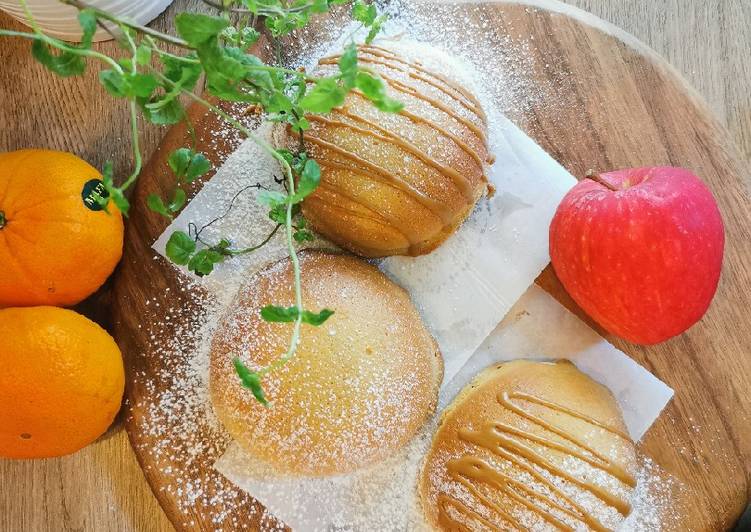
Hey everyone, it is me, Dave, welcome to my recipe page. Today, I will show you a way to prepare a distinctive dish, soy milk shabu shabu hot pot. One of my favorites food recipes. For mine, I am going to make it a bit unique. This is gonna smell and look delicious.
Soy Milk Shabu Shabu Hot Pot is one of the most popular of current trending meals in the world. It is appreciated by millions every day. It’s easy, it’s quick, it tastes yummy. They’re nice and they look wonderful. Soy Milk Shabu Shabu Hot Pot is something which I’ve loved my entire life.
Check Out Top Brands On eBay. Delicious Japanese Soy Milk Hot Pot recipe with napa cabbage, mushrooms, and thinly sliced pork cooked in a creamy and savory soy milk broth. Shabu Shabu and Sukiyaki are both very popular and well known Japanese hot pot dishes outside of Japan.
To get started with this particular recipe, we must first prepare a few components. You can have soy milk shabu shabu hot pot using 13 ingredients and 9 steps. Here is how you cook it.
The ingredients needed to make Soy Milk Shabu Shabu Hot Pot:
- Make ready 400 ml "A" Soy milk
- Get 400 ml "A" Kombu dashi soup stock
- Get 150 ml "A" Dashi soy sauce (I used Yamaki brand's kappou shiro-dashi)
- Get 1/4 Onion
- Get 1 White part of Japanese leek
- Get 1 tbsp "B" Toasted sesame seeds
- Take 1 as much (to taste) Silken tofu
- Make ready 1 as much (to taste) "C" Shabu-shabu grade sliced pork
- Take 1 as much (to taste) "C" Enoki mushrooms, shiitake mushrooms, mizuna, Chinese cabbage
- Make ready 1 "C" Toasted sesame seeds
- Make ready 1 "C" Dried yuzu citrus zest
- Take 1 Minced green onions or scallions
- Get 1 Kombu dashi soup stock
Place the skillet or shabu-shabu pot-and-stove in the center of the table setting. Strain the broth made in the saucepan into the skillet. Soy Milk Shabu Shabu Hot Pot There's a certain tofu restaurant franchise that I love, since it is reasonably priced. I had their seasonal soy milk pork shabu-shabu dish, and it blew me away.
Steps to make Soy Milk Shabu Shabu Hot Pot:
- Prepare plenty of kombu dashi soup stock by soaking the kombu in a pot full of water, then removing it right before the water comes to a boil.
- Mince the onions as thinly as possible. Finely slice the Japanese leek into rounds. Cut the tofu into 5 cm cubes.
- Combine all of the "A" ingredients in an earthenware pot, heat, and add half of the tofu right from Step 2 right before it comes to a boil.
- I used Yamaki brand's "Kappou Shiro-dashi." Adjust the amount to taste.
- When the soup from Step 3 comes to a boil, turn off the heat, and add the onion and Japanese leek from Step 2 and add the "B" toasted sesame seeds.
- Chop the "C" ingredients into your preferred sizes, prepare the minced green onions, then it's done To me, the mizuna is essential.
- Bring a portable stove to the table, and enjoy eating shabu shabu all together If it boils down too much, add more of the kombu dashi stock.
- I finish the meal with ramen served in the leftover soup, but it also tastes great risotto-style; just add rice. No seasonings; just garnish with green onions.
- At the restaurant, they also finish this off by adding rice to create a risotto-style dish. Grind black pepper over before serving.
Shabu Shabu is a popular Japanese-style hot pot where the meat and assorted vegetables are cooked in a flavorful broth called kombu dashi. Everyone at the table takes part in the cooking and enjoys the ingredients with different dipping sauces. The broth in the hot pot differs depending on the restaurant. There are many types you can try, including konbu seaweed stock, soy milk stock, a sukiyaki-flavored broth and even spicy kimchi (chige) stock. Other ingredients, such as vegetables and seafood, are also part of typical shabu-shabu.
So that is going to wrap it up with this exceptional food soy milk shabu shabu hot pot recipe. Thanks so much for your time. I am confident that you can make this at home. There is gonna be interesting food in home recipes coming up. Don’t forget to bookmark this page on your browser, and share it to your loved ones, colleague and friends. Thank you for reading. Go on get cooking!


